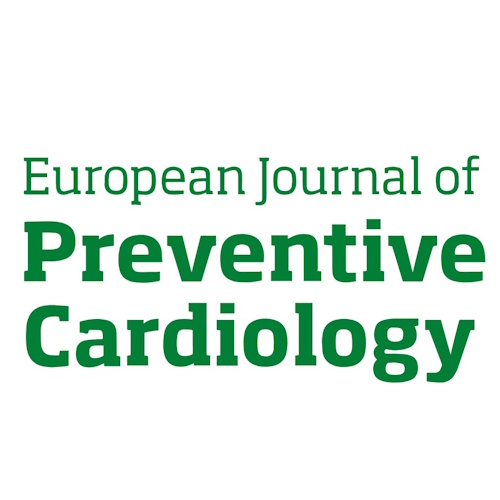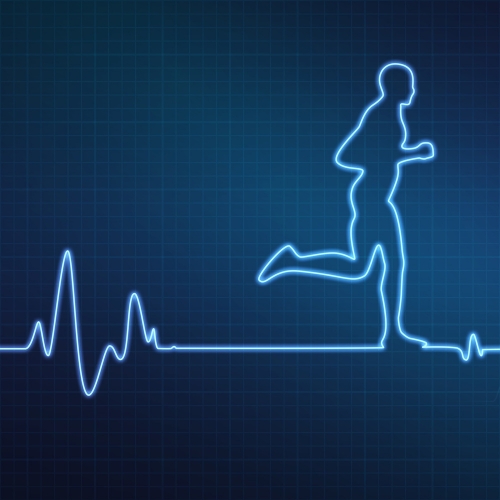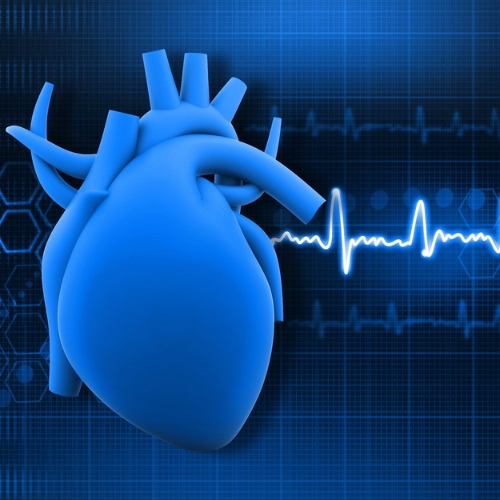When it comes to living a longer, healthier life, we often hear that physical activity is key. But have you ever wondered whether it's more important to exercise harder or longer? Recent research sheds light on this question, suggesting that the intensity of physical activity may actually matter more than how long we exercise.
The study, published in the European Journal of Preventive Cardiology, uses data from the National Health and Nutrition Examination Survey (NHANES) and examines whether physical activity intensity or volume plays a more significant role in reducing the risk of mortality. Let’s dive into the details of this research and understand what it means for your daily exercise routine and overall health.
Physical Activity and Longevity
Researchers Fabian Schwendinger and his colleagues sought to understand how various aspects of physical activity, like its volume and intensity, relate to the risk of dying from any cause, including cardiovascular diseases (CVD). To do this, they analyzed data from the 2011-2014 NHANES survey, which included participants aged 20 and older. The team utilized accelerometer data to measure physical activity, giving precise insights into activity volume, intensity, and fragmentation.
Key measures used in this study were average acceleration (AvAcc), intensity gradient (IG), and total physical activity (TPA). Average acceleration reflects how much activity people accumulate in a day, while intensity gradient helps quantify the distribution of intensity—essentially telling us if someone spends more time doing high-intensity or low-intensity activities. The researchers then linked this data to the participants' mortality rates, using statistical models to determine the association between activity patterns and longevity.
The Debate: Intensity vs. Volume
It turns out that the way we think about exercise—how long and how hard—may significantly impact how effective it is in promoting a longer life. Traditional guidelines have emphasized getting more exercise in terms of duration. For example, public health agencies have often recommended accumulating at least 150 minutes of moderate-intensity or 75 minutes of high-intensity exercise weekly.
However, this study suggests that the intensity of physical activity could be a more significant predictor of reduced mortality risk than the sheer volume of activity.
In the study, both average acceleration (volume) and intensity gradient (intensity) were shown to be inversely related to the risk of death. But here’s the interesting part: the reduction in mortality risk was more significant when people engaged in higher-intensity activities rather than simply focusing on the duration or total volume of activities.
For example, a person moving from the 25th to the 50th percentile of intensity reduced their risk of death from cardiovascular disease by 41%, whereas a similar increase in volume led to less pronounced reductions in mortality risk. This clearly underscores the value of incorporating intense activity into daily routines.
How was the data collected?
To accurately measure physical activity, researchers used data collected from wearable accelerometers. Participants wore these devices for seven consecutive days, capturing various measures like average acceleration and time spent in different intensity levels. Using these metrics, the researchers assessed both the volume and intensity of physical activity across the day.
To ensure that the data was meaningful, the study included only participants who had valid accelerometer, covariate, and mortality data. With around 7,518 participants (52% of whom were women), the median age was 49, providing a broad spectrum of data that allowed researchers to make general observations applicable to the wider population.
This rigorous method of measurement allowed for more reliable conclusions about the role of intensity versus volume in physical activity—far beyond self-reported data, which tends to be less accurate. With such robust data, the findings give us an important perspective on how to shape our exercise routines for better health outcomes.
Intensity Matters More
The study revealed a significant inverse relationship between physical activity intensity and mortality risk—specifically, that higher intensity was associated with a larger reduction in risk compared to simply focusing on the amount of physical activity.
Intensity Drives Longevity
When researchers compared people who engaged in higher-intensity activities to those who did not, they found a substantial reduction in mortality risk. Specifically, the hazard ratio for cardiovascular disease mortality decreased by 41% when participants increased from the 25th to the 50th percentile of intensity. The study also showed that these reductions plateaued at a certain level, meaning there’s a point beyond which additional intensity doesn’t significantly lower your risk further.
Volume Also Plays a Role, But Not As Much
Volume, or the amount of physical activity, did reduce mortality, but to a lesser extent than intensity. There was a 14.4% reduction in all-cause mortality when participants increased their average acceleration from the 25th to the 50th percentile. This suggests that while staying physically active is important, focusing on intensity can yield bigger benefits.
Combining Both Is Ideal
Although intensity was found to have a more profound impact, combining moderate volume with some high-intensity activities yields the most comprehensive health benefits. For example, people who engaged in continuous bouts of activity of high intensity (rather than fragmented, sporadic efforts) had even greater reductions in mortality risk.
Intensity vs. Volume: What Does It Mean for You?
So, what does this mean for those of us looking to exercise for better health? Should we start running at full speed instead of walking for an hour every day? Not necessarily.
The key takeaway here is that incorporating bouts of high-intensity activity into our routines—whether through brisk walking, cycling, or even a short jog—can yield significant health benefits. Importantly, it’s not about replacing lower-intensity activities but about finding a balance that includes moments of more strenuous effort.
For people who enjoy walking, increasing the pace for a few minutes every now and then can make a big difference. If you’re someone who likes cycling, adding a few sprints during your ride can give you the added intensity your body needs for cardiovascular benefits.
It’s also worth noting that the study found that health benefits could be realized with relatively short, high-intensity bouts of activity. In other words, you don’t have to spend hours in the gym. Instead, focus on quality—short bursts of intensity are enough to significantly impact longevity.
Role of Cardiovascular Disease and Physical Activity
The study also highlighted that intensity was particularly important when looking at cardiovascular disease (CVD) mortality. Cardiovascular health is an area where physical activity has a well-known benefit, but the findings suggest that the intensity of these activities might be crucial in reducing the risk of dying from CVD.
For example, moderate physical activity that makes your heart pump harder and makes you sweat can enhance cardiovascular function, reduce blood pressure, and improve cholesterol levels. High-intensity activity takes these benefits further by providing greater cardiovascular stimulus, enhancing endurance, and improving heart health.
The researchers also created centile curves for average acceleration and intensity gradient to help visualize the typical levels of physical activity for adults. These curves can serve as useful tools for assessing how individuals compare to average activity levels and whether they may need to ramp up their intensity.
Fragmentation and Its Impact on Health
Another interesting finding from the study was the concept of physical activity fragmentation—that is, whether people accumulated their high-intensity activity in continuous sessions or broke it up across the day. The researchers found that those who concentrated more intense activity into bouts had a lower risk of mortality compared to those who did so sporadically.
For instance, accumulating 15 minutes of brisk walking all at once had a more positive impact than splitting that same effort into several shorter episodes throughout the day. This suggests that sustained activity can provide additional health benefits that shorter, fragmented efforts cannot.
This doesn’t mean that shorter sessions are useless. For people who struggle to find time for a full workout, doing whatever activity is possible whenever possible still provides benefits. However, the evidence suggests that there may be added value in occasionally pushing ourselves to sustain those intense moments for a bit longer.
Why Does Intensity Matter More?
There are several reasons why intensity might play a more critical role in longevity compared to volume. High-intensity physical activity is known to elicit greater physiological responses, such as improved cardiovascular fitness and better metabolic health. By pushing our bodies to higher levels of exertion, we promote adaptations like increased VO2 max (the maximum rate of oxygen consumption) and better insulin sensitivity—both crucial factors in disease prevention and overall longevity.
Moreover, high-intensity exercise also promotes hormonal changes that are beneficial for our health. Hormones such as endorphins, often called “feel-good” hormones, are released during intense activities, leading to improvements in mood and mental health, which are themselves linked to better physical health outcomes.
Making Physical Activity Work for You
Now that we’ve explored the study’s findings, how can you make them work for you? The good news is that you don’t need to be an athlete to incorporate high-intensity activities into your routine. Here are some practical tips:
Add Sprints to Your Walks or Runs: Whether you prefer jogging or walking, try adding short sprints or faster-paced intervals. For example, walk at your usual pace for three minutes and then pick up the pace for one minute. Repeat this throughout your workout.
Incorporate High-Intensity Interval Training (HIIT): HIIT workouts are known for alternating between short periods of intense exercise and rest. These sessions are great for increasing your heart rate, boosting cardiovascular health, and fitting in high-intensity activity in a short amount of time.
Use Stairs or Hills: If you have access to stairs or a hill, use them to your advantage. Walking or running up an incline is a simple way to add intensity without changing your workout significantly.
Make It Fun: Choose activities that you enjoy. Whether it’s a high-energy dance class, a game of basketball, or a hike in nature, doing something you love makes it easier to incorporate those bursts of intensity.
Quality Over Quantity
The study clearly demonstrates that, when it comes to physical activity and longevity, quality might trump quantity. Intensity matters—especially for cardiovascular health. However, this doesn’t mean that moderate, steady activities like walking, gardening, or leisurely biking aren’t beneficial. The best approach is to strike a balance: keep moving, accumulate physical activity throughout the day, but also look for opportunities to add some high-intensity bursts.
As you build your fitness routine, consider adding moments that challenge you—whether it’s by running up the stairs instead of taking the elevator or cycling at a faster pace for a minute or two during your ride. These small bursts can go a long way toward extending your lifespan and enhancing your overall health.
To sum it up,
Physical activity is one of the most powerful tools we have for living a longer, healthier life. But this study offers valuable new insights: intensity matters more than we might have thought. Incorporating more high-intensity moments into your daily life can significantly reduce your risk of dying from all causes, particularly cardiovascular disease.
The key to unlocking these benefits isn’t about spending hours exercising each day—it’s about making each minute count. By adding bursts of intensity, focusing on sustained efforts, and embracing both moderate and vigorous activities, we can enhance our longevity and quality of life.
The next time you think about skipping that intense spin class or avoiding a steep hill on your walk, remember—those moments of intensity might just be the key to a longer, healthier life.
The study is published in the European Journal of Preventive Cardiology. It was led by Fabian Schwendinger from University of Basel.






